
Plenty of research shows that maintaining good digital experiences is important for innovation, maintaining a competitive edge, and achieve better business outcomes. But in healthcare, healthy digital employee experience goes well beyond job satisfaction.
Plenty of research shows that maintaining good digital experiences is important for organizations to innovate, stay competitive, and achieve better business outcomes. But in healthcare, healthy digital employee experience goes well beyond job satisfaction.
Improving the interactions between medical professionals and technology isn’t just essential for keeping up productivity — it’s also vital for providing exceptional, and sometimes lifesaving, patient care.
“Every minute they’re unproductive is a minute they’re away from doing their primary duty, which is taking care of (people),” explained Mike Flannigan, a Lakeside Software customer success engineer who worked in hospital desktop engineering for 24 years. “You really have to think of it as ‘What if it was your family laying there in their bed while the nurse is struggling to get the doctor’s orders through the computer because the CPU is pegged or it doesn’t have enough memory or it’s running an application that’s crashing?’”
Yet as Covid-19 resurges in some parts of the world and IT teams continue to grapple with a global computer-chip shortage, delivering better digital experiences in hospitals and other medical environments has become more and more difficult. And to get a better understanding of the situation, it’s worth examining the state of healthcare as well as the immediate IT challenges the industry faces.
Lakeside Software’s Mike Flannigan and Jason Coari discuss key IT challenges in healthcare and how digital experience management can help during a recent webinar. (Watch the full session on demand here.)
Diagnosis: Healthcare Is in Crisis
While healthcare has always faced a great deal of challenges, Covid-19 has created a few unprecedented difficulties for hospitals and health systems.
There’s budgetary pressure as hospitals continue to fill up and the number of non-emergency procedures remains low. Some equipment resourcing continues to be difficult, leading to overtaxed hardware and competing priorities. And, of course, burnout has greatly impacted employee satisfaction and retention in healthcare, along with most other industries.
It might come as no surprise then that healthcare is among the hardest hit industries in “The Great Resignation” — a massive turnover trend resulting from the pandemic. Healthcare resignation rates increased by 3.61% between March 2020 and March 2021, according to data from workforce analytics firm Visier, and are expected to rise even more.
Symptom: Poor Digital Employee Experience
As burnout and retention become more of a pressing issue for organizations, so does digital employee experience (DEX).
But while 90% of C-level agrees DEX is a medium to very high priority since the pandemic, and 67% of IT leaders say DEX is a critical priority, that hasn’t quite translated to better experiences, according to Lakeside’s recent global survey on the future of workplaces. Just 7% of employees say their digital experience is fine and doesn’t need any improvements.
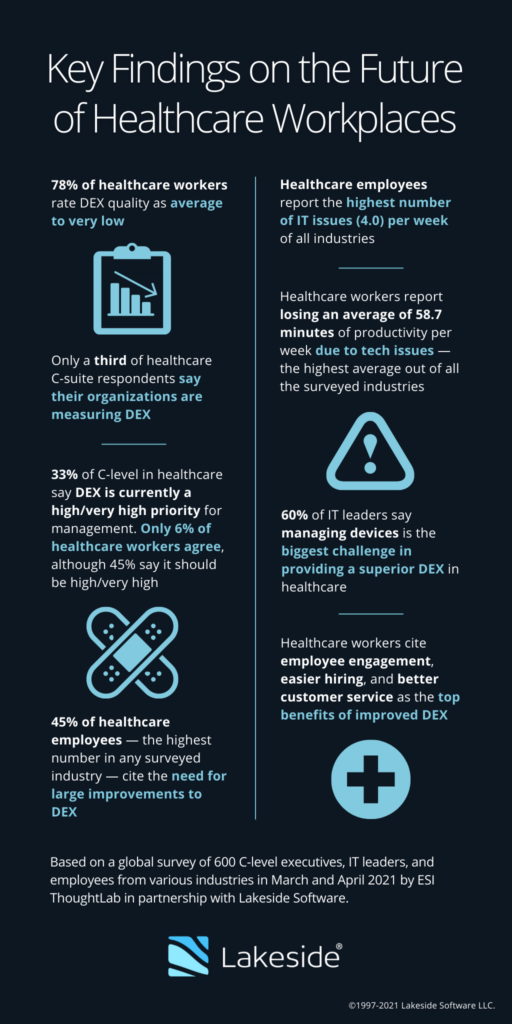
And in healthcare especially, digital employee experience seems to be in critical condition.
Lakeside’s report on survey results shows 78% of healthcare workers rate their DEX quality as average or worse, and 45% cite the need for major improvements. Healthcare employees also report the highest average number of IT issues (4) per week of all industries, as well as the most productive time lost (nearly 59 minutes on average per week) due to those tech issues.
In other words, healthcare has a serious case of technology issues that are causing frustration, hindering productivity, and possibly impacting patient care. But the good news is that, with the right tools and strategies in place, IT can help eliminate a lot of that digital friction.
Treatment: 5 Healthcare Challenges Lakeside Can Help Solve
Despite a clear need for improved digital experiences, effectively managing devices can be especially difficult in healthcare environments. In fact, 60% of surveyed IT leaders cite it as the biggest challenge to providing a superior DEX in healthcare, according to Lakeside’s report.
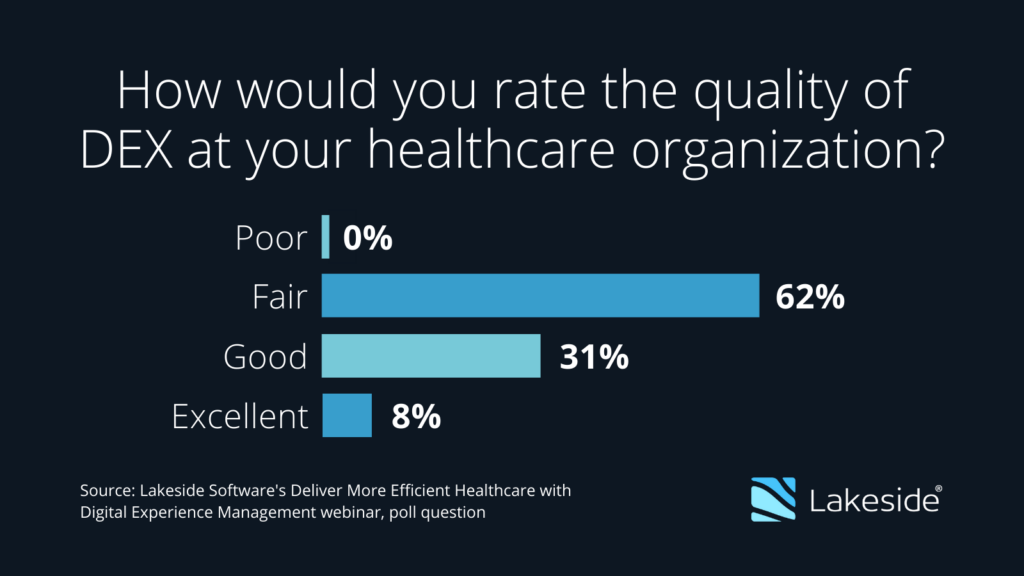
As busy nurses and clinicians tend to patients, many tech issues go unreported for long periods of time. And without complete visibility across endpoints, IT is forced to take a slow and reactive approach to support, not to mention a best-guess strategy when planning migrations and hardware refreshes.
For those reasons, many organizations have started exploring digital experience management (DEM) solutions, such as Lakeside’s Digital Experience Cloud, powered by SysTrack. By gathering high frequency and fidelity data directly from endpoints, IT has the visibility needed to understand the issues impacting end-user experience and proactively address those problems.
Simply put, DEM helps IT teams know more so they can do more.
Here are some examples of how Lakeside’s Digital Experience Cloud can help IT tackle several real challenges in the healthcare environment.
Efficiency
When tech issues come up, healthcare workers often don’t have the time to report them to IT right away.
“In healthcare, (a computer is) an ancillary tool. It’s critically important — they can’t look up patient information or anything without it — but it’s not the focus of their job,” Flannigan explained. “The focus of their job is saving lives and taking care of people, and the computer is just a … means to an end.”
So impacted computer carts end up collecting in a corner until all devices are down, requiring IT to do rapid root cause analysis on several endpoints all at once. Lakeside’s proactive endpoint capabilities, however, can help to remotely monitor endpoints, detect issues, and automatically resolve many problems with minimal impact to end users.
Cost optimization
What devices and software do doctors and nurses need to be efficient? How many per hospital unit? Are there underutilized resources that can be repurposed?
Lakeside’s DEM platform helps IT optimize assets and cut costs by right-sizing hardware and software; enabling need-based procurement; and identifying opportunities to reclaim unused software licenses. It can also help IT redistribute devices based on “focus time” and other usage metrics.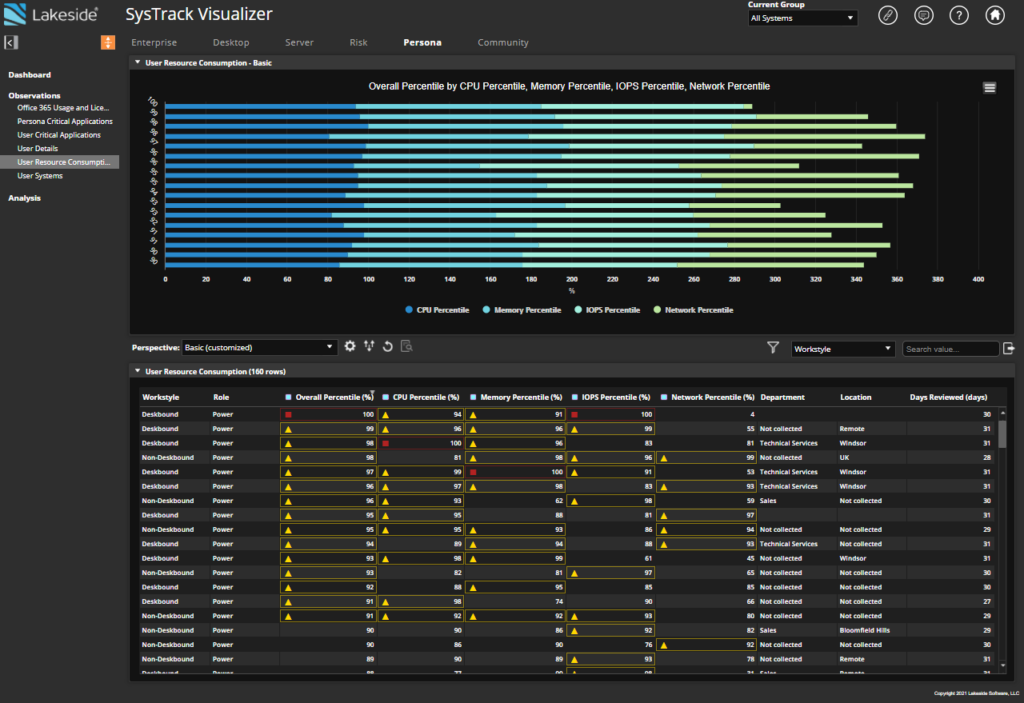 Digital Experience Cloud dashboard showing user consumption of CPU, memory, IOps, and network based on personas.
Digital Experience Cloud dashboard showing user consumption of CPU, memory, IOps, and network based on personas.
Virtual desktop experience
Hospitals frequently provide thin clients for staff to use, but there are always questions as to why the VDI is running slowly and how to right-size. Lakeside’s Digital Experience Cloud can provide insights throughout the process, giving IT actual data to explore issues, drive strategic decisions, vet/validate vendor claims, and even prevent many migration headaches.
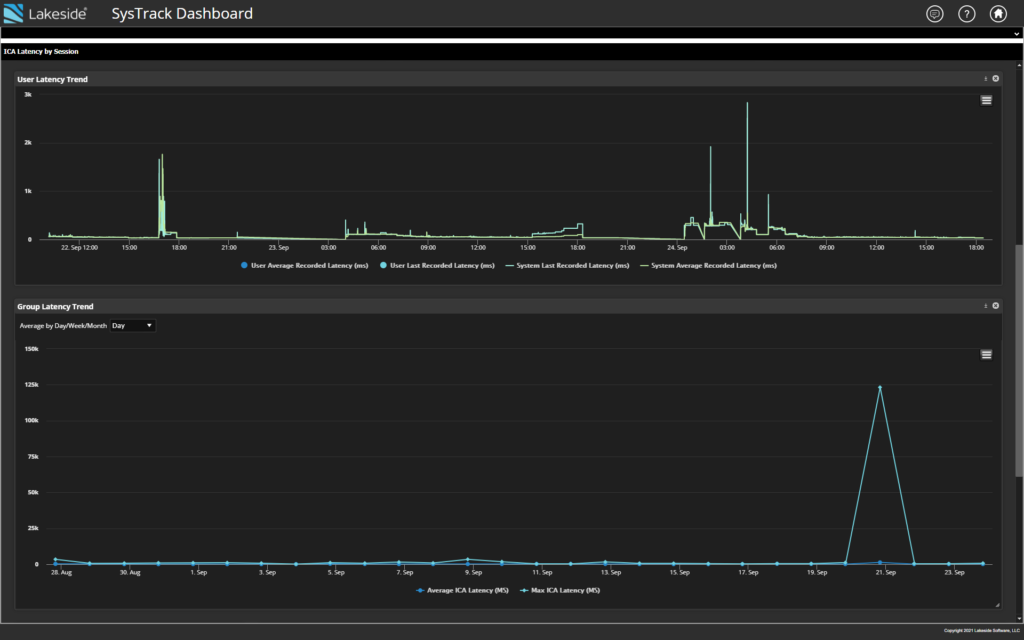
Quality IT support
When support tickets start rolling in, the Level 1 service desk doesn’t usually have the necessary insights or knowledge about endpoints to quickly diagnose and fix problems. Yet with Lakeside Assist, an all-in-one L1 help desk tool, IT can streamline the L1 workflow and improve mean time to resolution (MTTR) and first contact resolution (FCR) by providing automated diagnosis, “one-click fix” remediation, and a seamless integration with ServiceNow. It also provides L1 teams with essential details without having to interrupt users.
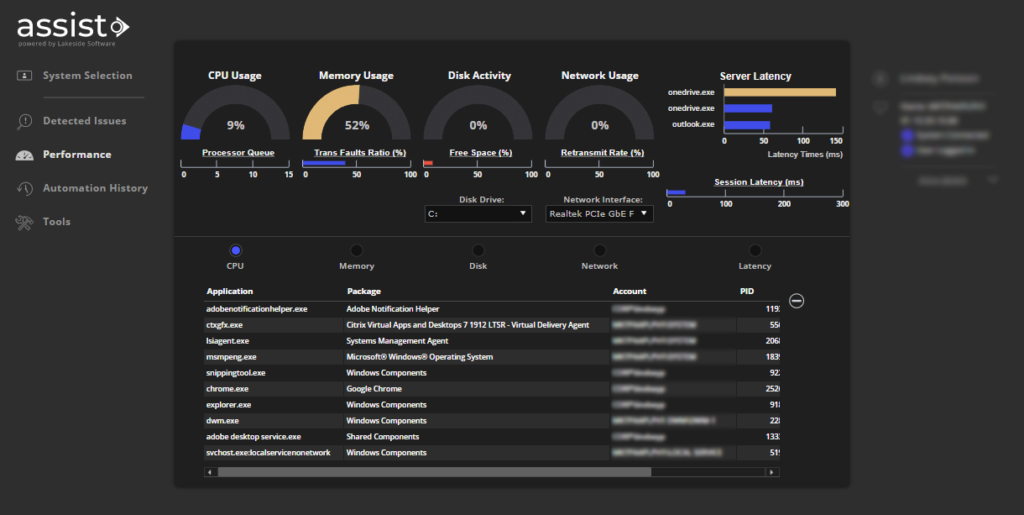
Fine-tuning security measures
With HIPAA and other privacy laws, as well as rising cyber attacks on healthcare, many institutions are tightening the security of their infrastructures. But when IT deploys anti-virus, data-loss prevention (DLP), and other security agents, they can inadvertently slow down devices and cause performance issues.
“Ultimately, through tools like Lakeside’s SysTrack, you can say, ‘Yeah, but we were running great until you added these three security applications, so let’s balance performance versus risk,’” Flannigan said. “Do we really need all of these running? Maybe they don’t have to be turned up as high as they are, catching every little thing.”
Through Lakeside’s platform, IT can track patches, updates, or newly launched security tools and see how they’re impacting devices.
Follow Up: Ensuring Consistent Digital Employee Experiences
When it comes to managing devices and improving digital employee experience in healthcare, Flannigan sums up the secret to success in one word: Consistency. No matter what floor or department healthcare workers might need to visit throughout their day, devices should be easy to use and dependable.
“It should be like a toaster or flipping a light switch — it should just work,” Flannigan said. “They should be able to walk up to it, get what they need out of it, and walk away because they’re very short staffed, overworked, and that has just tripled with Covid.”
But by providing IT with the means to monitor and proactively treat issues, organizations can make significant improvements to their digital health.
Subscribe to the Lakeside Newsletter
Receive platform tips, release updates, news and more



